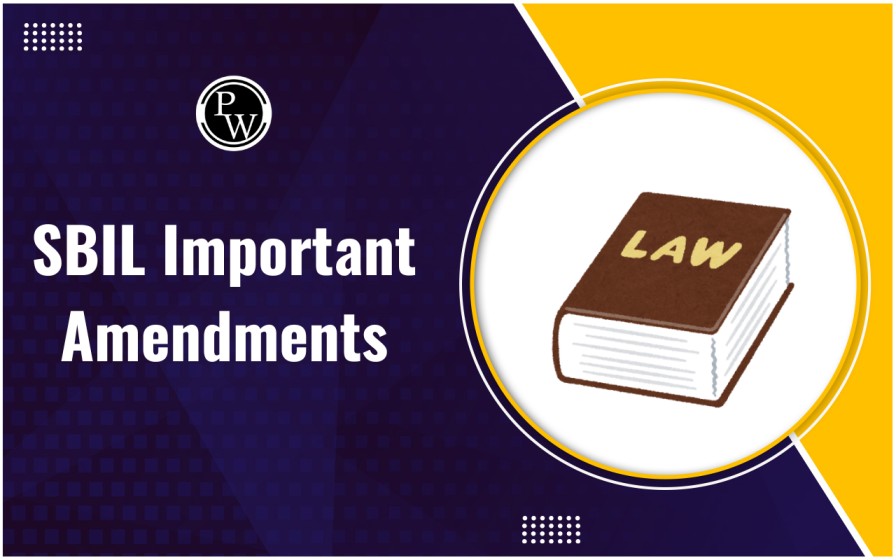
Goods and Services Tax (GST) is a unified indirect tax imposed on India's supply of goods and services. This tax system aims to create a single market by eliminating the cascading effect of taxes and promoting ease of doing business. In this article, we will explore various aspects of GST, including the rules governing its implementation. By understanding GST, businesses and consumers can navigate the tax landscape more efficiently and comply with the necessary regulations.
Meaning of GST
The GST in India is called Goods and Services Tax. It is a tax applied to the supply of goods and services. It is an improved and new tax system compared to India's previous Value Added Tax (VAT). It uses a single tax rate for both goods and services. Unlike VAT, GST is applied at multiple stages of production and is destination-based, meaning it is charged at the point of consumption. It is replaced several older indirect taxes like VAT, excise duty, and service tax, making tax administration more straightforward across the country. The Parliament passed the GST Act on March 29, 2017. It was officially followed on July 1, 2017.The Fundamental Principles of GST
The fundamental Principles that the GST follows in India are explained in the points below:Destination-Based Taxation Model
GST follows a destination-based taxation model, meaning the tax revenue is allocated to the state where the goods are consumed rather than produced. This approach ensures a fair distribution of tax revenue among the states.Value Added Tax (VAT) in GST
Under GST, tax is charged only on the value added at each step of the supply process. This means businesses pay tax only on the amount they add to the product's value, not on the entire product cost. This prevents the same value from being taxed multiple times. The final consumer ultimately bears the tax burden, ensuring a fair tax structure.Input Tax Credit (ITC) Mechanism
The ITC mechanism allows taxpayers to claim credit for the tax paid on inputs used in producing or supplying goods and services. This reduces the overall tax cost and prevents the cascading effect of taxes.Uniformity in Tax Rates
GST has made tax rates the same all over the country, replacing many old taxes from the central and state governments. There are four main tax rates: 5%, 12%, 18%, and 28%. Items are placed into these rates based on what they are, how necessary they are, and if they are luxury items.Transparency and Fairness in Taxation
GST has made the tax system more transparent and accountable. Taxpayers can easily track the tax paid at each stage of the supply chain and claim the input tax credit. This transparency reduces the chances of tax evasion.Also Check: Basic Concept of Income Tax
How Does the GST Work?
GST is a multi-stage tax applied at different points in the production and distribution process. The taxes are collected at each stage of the supply chain. This means GST is charged at every step, from manufacturing to selling, ensuring proper taxation throughout the process. Let's see the process of how GST works:Manufacturer’s Perspective
The points below describe the working of GST from the manufacturers' perspective.- A manufacturer buys raw materials for ₹100 and pays 5% GST, so the total cost becomes ₹105.
- The manufacturer adds ₹50 value to the product, selling it for ₹155.
- The GST on ₹155 is ₹8, but the manufacturer can subtract the ₹5 GST paid on the raw materials.
- Therefore, the net GST paid by the manufacturer is ₹3 (₹8 - ₹5).
Service Provider’s Role
Service providers have a significant role in any kind of tax imposed. Let's look at how GST works from the service provider's point of view.- A service provider buys a product for ₹200 and pays 5% GST, making the total cost ₹210.
- The provider adds ₹100 in value, charging ₹310 for the service.
- The GST on ₹310 is ₹15.5, but the provider can subtract the ₹10 GST paid on the product.
- Therefore, the net GST paid by the service provider is ₹5.5 (₹15.5 - ₹10).
Retailer’s Involvement
The next stage involves the retailer, and the working of GST is explained below:- A retailer buys a product for ₹250 and pays 5% GST, making the total cost ₹262.5.
- The retailer adds ₹25 margin, selling it for ₹287.5.
- The GST on ₹287.5 is ₹14.38, but the retailer can subtract the ₹12.5 GST paid on the product.
- So, the net GST the retailer pays is ₹1.88 (₹14.38 - ₹12.5).
Consumer’s Perspective
The final stage of GST is for the consumer. The working of this tax from the consumer's perspective is described below:- A consumer buys a product for ₹300 and pays 5% GST, making the total cost ₹315.
- The consumer pays the full GST of ₹15 and cannot claim any input tax credit.
- The consumer is the final user, bearing the entire GST cost.
Types of GST
The GST system in India is of four types, and the details of each type of GST are described in the table below:| Types of GST | |
| GST Type | Details |
| CGST | This tax applies when goods and services are bought and sold within the same state, ensuring revenue goes to the central government. |
| SGST | The state government collects tax on transactions within the same state, called State GST (SGST). This tax applies when goods and services are bought and sold within the same state, ensuring revenue goes to the state government. |
| IGST | The central government collects tax on transactions between different states, as well as on imports and exports. This tax is known as Integrated GST (IGST) and ensures that revenue from inter-state trade and international transactions goes to the central government. |
| UTGST | Union territories collect tax on transactions within their regions, similar to state GST (SGST), but specifically for certain union territories. |
Advantages of GST
GST merged previous indirect taxes and has various advantages. The various advantages of GST are listed below:- No Double Tax : GST removed the tax-on-tax effect, lowering the overall cost of goods and making them cheaper for consumers.
- Simplified Taxes : GST replaced 17 different taxes, reducing compliance costs for businesses.
- Online Processes : All GST activities, like registration and tax payments, are done online, speeding up processes and reducing paperwork.
- Uniform Market : GST created a unified market across states, lowering the cost of goods.
Introduction to GST FAQs
What is RCM in GST?
The Reverse Charge Mechanism in a GST is where the recipient of goods or services is liable to pay the tax instead of the supplier.
What is the rule 42 in GST?
It deals with the reversal of input tax credit on nonpayment of suppliers within 180 days from the date of the invoice.
What is the exam to become a GST Officer?
The GSTP (Global System of Trade Preferences) Exam is the exam to become a GST Officer.
How to calculate GST?
GST Amount (Selling Price GST Rate)/100. It is the only way to calculate GST.
🔥 Trending Blogs
Talk to a counsellorHave doubts? Our support team will be happy to assist you!

Check out these Related Articles
Free Learning Resources
PW Books
Notes (Class 10-12)
PW Study Materials
Notes (Class 6-9)
Ncert Solutions
Govt Exams
Class 6th to 12th Online Courses
Govt Job Exams Courses
UPSC Coaching
Defence Exam Coaching
Gate Exam Coaching
Other Exams
Know about Physics Wallah
Physics Wallah is an Indian edtech platform that provides accessible & comprehensive learning experiences to students from Class 6th to postgraduate level. We also provide extensive NCERT solutions, sample paper, NEET, JEE Mains, BITSAT previous year papers & more such resources to students. Physics Wallah also caters to over 3.5 million registered students and over 78 lakh+ Youtube subscribers with 4.8 rating on its app.
We Stand Out because
We provide students with intensive courses with India’s qualified & experienced faculties & mentors. PW strives to make the learning experience comprehensive and accessible for students of all sections of society. We believe in empowering every single student who couldn't dream of a good career in engineering and medical field earlier.
Our Key Focus Areas
Physics Wallah's main focus is to make the learning experience as economical as possible for all students. With our affordable courses like Lakshya, Udaan and Arjuna and many others, we have been able to provide a platform for lakhs of aspirants. From providing Chemistry, Maths, Physics formula to giving e-books of eminent authors like RD Sharma, RS Aggarwal and Lakhmir Singh, PW focuses on every single student's need for preparation.
What Makes Us Different
Physics Wallah strives to develop a comprehensive pedagogical structure for students, where they get a state-of-the-art learning experience with study material and resources. Apart from catering students preparing for JEE Mains and NEET, PW also provides study material for each state board like Uttar Pradesh, Bihar, and others
Copyright © 2025 Physicswallah Limited All rights reserved.
Get App









